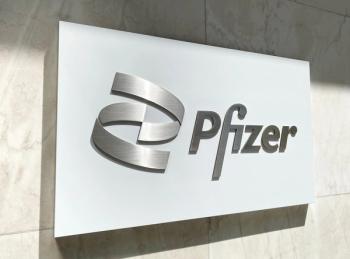
Biosimilar Development Moves Forward at FDA
FDA has scheduled a public meeting in early January to assess and weigh data on the first United States application for a biosimilar therapy.
FDA has scheduled a public meeting in early January to assess and weigh data on the first United States application for a biosimilar therapy. The Jan. 7, 2015 meeting of FDA’s Oncologic Drugs Advisory Committee (ODAC) will discuss Sandoz’ biologics license application (BLA) for a biosimilar to Amgen’s Neupogen (filgrastim). Advisory committees usually don’t assess generic drugs, and it’s not clear if FDA will bring all biosimilars to advisory panels or just this first one. Biopharmaceutical companies have submitted at least three applications for biosimilars, and FDA hopes that the discussion will be beneficial to both FDA and to sponsors, noted Leah Christl, associate director for therapeutic biologics and biosimilars in the Office of New Drugs (OND), Center for Drug Evaluation and Research (CDER), at the FDA/CMS Summit in December 2014.
FDA anticipates that the ODAC meeting will provide an opportunity for agency staff to gain input from medical experts on strategies for documenting analytical similarity and for designing clinical studies that address necessary issues. But this added review presents “an additional challenge” in moving forward with biosimilars, observed Mark McCamish, global head of biopharm and oncology injectables development at Sandoz. He noted at the Summit that the highly expert clinicians on ODAC are used to diving into extensive clinical trial data on drug safety and efficacy and may react differently to data to confirm similarity.
The ODAC deliberations should be of great interest to Canada’s Apotex, which just filed an application for a biosimilar of Amgen’s pegfilgrastim (Neulasta), a long-acting version of Neupogen, which also treats neutropenia. Another biosimilar application was filed in August by Celltrion of South Korea for Johnson & Johnson’s Remicade (infliximab), a complex monoclonal antibody with multiple indications. Sumant Ramachandra, chief scientific officer at Hospira, which is a partner on the infliximab filing, is interested in seeing whether FDA brings to the advisory panel additional experts with knowledge of biosimilarity.
Christl reported at the Summit that FDA’s biosimilar biological product development (BPD) program is growing; now providing advice on 30 investigational new drug applications, which arise from 51 development programs with 14 different reference products. There is “robust interest in developing these products,” Christl commented, which means that agency staffers have to schedule many more meetings with sponsors on development strategies. A main concern, Christl noted, is that some biopharma companies fail to establish a strong foundation of analytical data to ensure sufficient similarity to the reference product prior to moving forward with clinical studies. Manufacturers may have to redo pharmacology studies and other trials, she said, if they fail to first address analytical differences.
FDA is working to finalize several draft guidance documents on biosimilar development and to issue another questions-and-answers guidance and advisories on topics such as interchangeability and labeling. The agency also is supporting global development of biosimilars through the “Biosimilars Cluster” formed with the European Medicines Agency, and now including regulators from Canada and Japan. Although European Union biosimilar approval policies differ from the US, an “alignment of scientific concepts” and parallel advice discussions may reduce the need for redundant clinical studies. Key topics include extrapolation of clinical trial data to added indications and use of reference products approved in other regions.
Interchangeability may prove to be less crucial in the US if payers drive biosimilar use and prescribing, notes Ramachandra of Hospira. He anticipates that biosimilars will offer 20–30% discounts off reference therapies, a notable savings for high-priced products. Biosimilars that provide responsible data on safety and efficacy will generate confidence in the marketplace and “will be adopted,” he says. The main question is how rapidly that adoption occurs.
FDA is under pressure to approve biosimilars to facilitate patient access to important medicines and support its public health mission. Less expensive versions of filgrastim and pegfilgrastim, for example, would encourage clinicians to provide these therapies to patients before they experience infections and fever related to chemotherapy, explains Gillian Woollett, senior vice-president of Avalere Health. And with the five-year anniversary of the Affordable Care Act coming soon, she notes, a lot of policy makers will be asking “where are the biosimilars?” authorized by that legislation.
Newsletter
Stay at the forefront of biopharmaceutical innovation—subscribe to BioPharm International for expert insights on drug development, manufacturing, compliance, and more.





